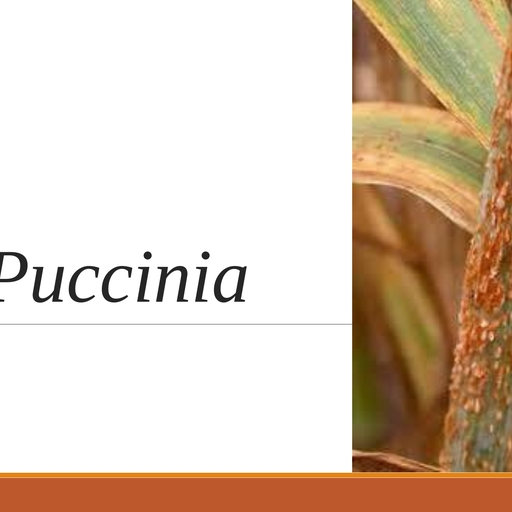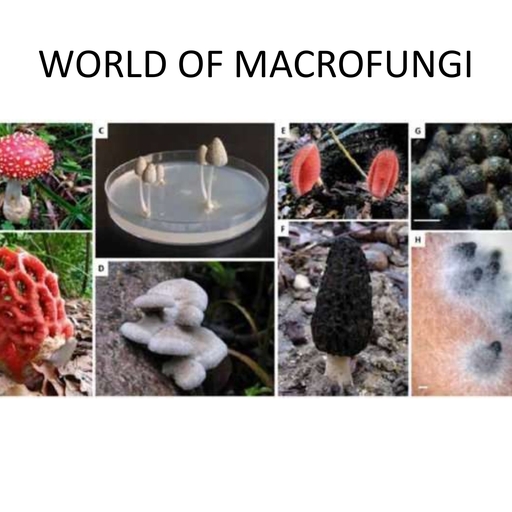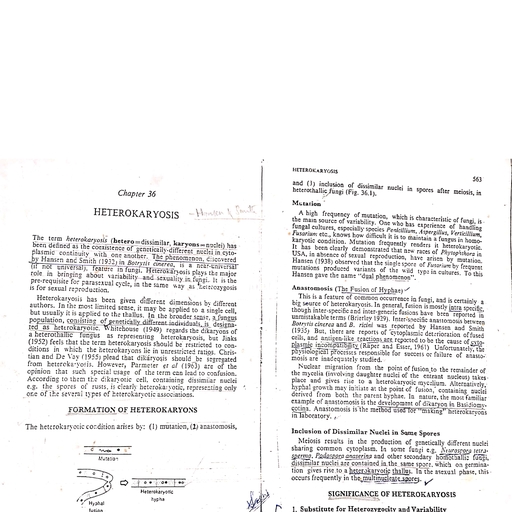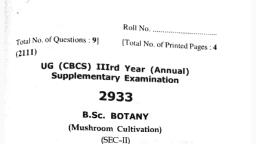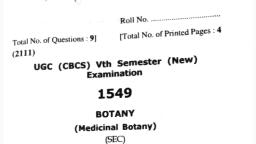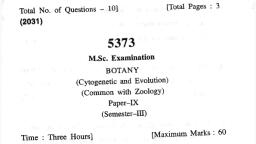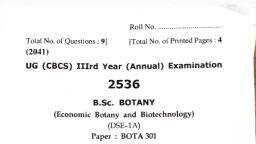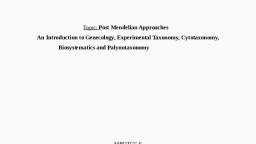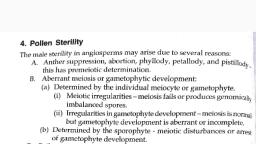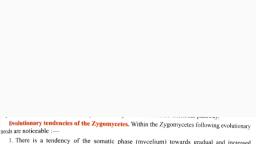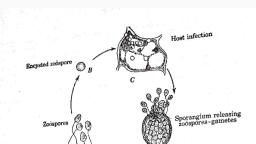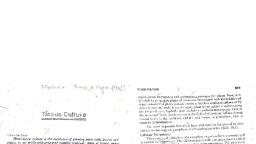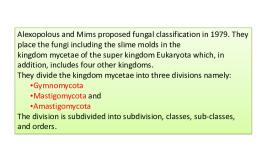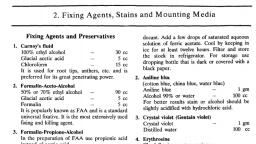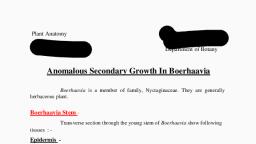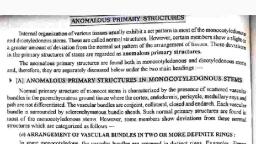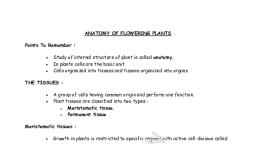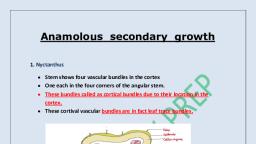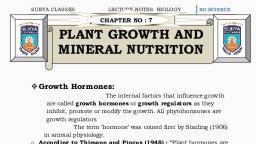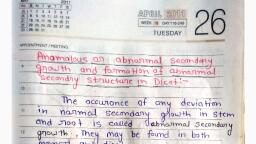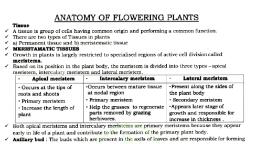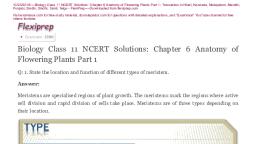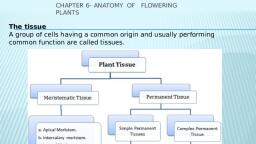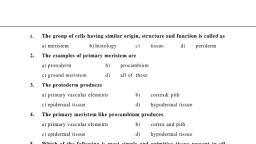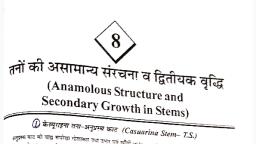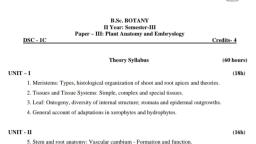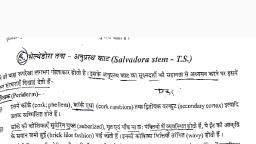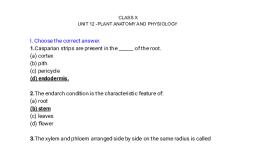Page 1 :
Plant Anatomy, B.Sc ( Hons.) Part ll, , Prof.(Dr.) Punam Jeswal, Head, Department of Botany, , Anomalous Secondary Growth In Bignonia, Anomalous Secondary Growth Increase in plant girth due to the vascular cambium or, cork cambium is called secondary growth. whereas the development, arrangement and, activity of the vascular cambium in most woody dicotyledonous and gymnosperm plants, tends to be very similar, there are some alternatives or deviation, which produce new, secondary tissues that do not follow a normal pattern. As a result the secondary plant, structure that are formed are termed anomalous., The word Anomalous means" deviating from the normal or common type, or order". The term Anomalous secondary growth is given for the deviation or variation., The pattern of the secondary thickening show deviation from the normal type is regard as, abnormal or anomalous secondary growth., Haberlandlt classified anomalous secondary growth into 1) Adaptive Anomaly - Anomalies as regards secondary growth in many case notable, being those of some climbers, lianas and storage organ such as, beet root, are environmental, since they are morphologically, and physiologically different from the normal types and, they, are thus adaptive (environmental)., 2) Non Adaptive Anomaly - At the same time there are cases of anomalous condition, which are non-environmental and which appear to be, merely cases of variations of the design., , The Anomalies may be listed as fellow 1., 2., 3., 4., 5., 6., 7., 8., , Anomalous position of vascular cambium, Abnormal behaviour of normal cambium., Accessory cambium formation and its activity., Extrastelar cambium., Interxylary or Included phloem., Presence of medullary bundles along with normal cambial activity., Presence of cortical bundles along with normal cambial activity., Intraxylary or Internal phloem.
Page 2 :
9. Secondary growth in monocotyledons. e.g. Dracaena., 10.Scattered vascular bundles in dicotyledons., 11. Anomalous primary growth a) Absence of vessels in the xylem., b) Scattered vascular bundles along with cambial activity in dicots., , Anomalous Secondary Growth In Bignonia, Bignonia Stem Bignonia is a member of Bignoniaceae family. The young stem shows wavy outline with, prominent ridges and furrows. The most interesting anatomical feature in Bignonia is the, occurrence of anomalous secondary structure. This is as follows Anomalous secondary thickening is due to the abnormal functioning of cambium., Cambium is normal in disposition and abnormal in function (adaptive type)., A) Presence of Phloem Wedges in the Xylem The young stems which exhibits this type of structure when, mature are provided with a normal ring of vascular bundles. The origin, position and, function of cambium ring is normal in the initial stage of growth. Cambium function, normally producing more secondary xylem towards inner side and less secondary, phloem to the outer side. But after sometime, the cambium cut off different proportion of, xylem and phloem in different points., At four diagonal point arranged in cross shaped order,, formation of secondary xylem is reduced and that of secondary phloem correspondingly, increase, so that secondary phloem with transverse bands of bast fibre gets penetrated, within the mass of xylem in the form of phloem pocket. Hence, the woody cylinder, appears to have four longitudinal grooves which become increasingly deeper with, secondary growth., As a result of these four furrows at four equidistant points appear in the, xylem, extending almost to the pith. The cambium breaks up into a number of strips,, widest ones occurring opposite the four projecting ridges of wood and the narrow ones at, the base of the grooves. Cambium is not found on the radial surface. Peculiar structure, with ridged and furrowed xylem cylinder is formed ( Anomalous structure in stelar, region). The four radial groups of the phloem are united by medullary rays seen, traversing the phloem of furrows., B) Presence of Fissured Xylem - The fissured xylem may only be seen in fairly old, stems. First of all wedges of phloem are formed and thereafter the xylem strand, becomes fissured by dilation and cell division in wood parenchyma and pith
Page 3 :
Fig. Bignonia Stem :- T.S. of Stem of Bignonia Showing An, Anomalous Secondary Growth.
